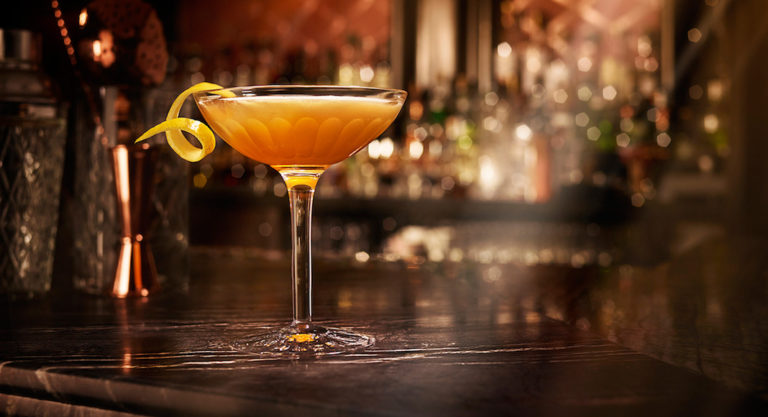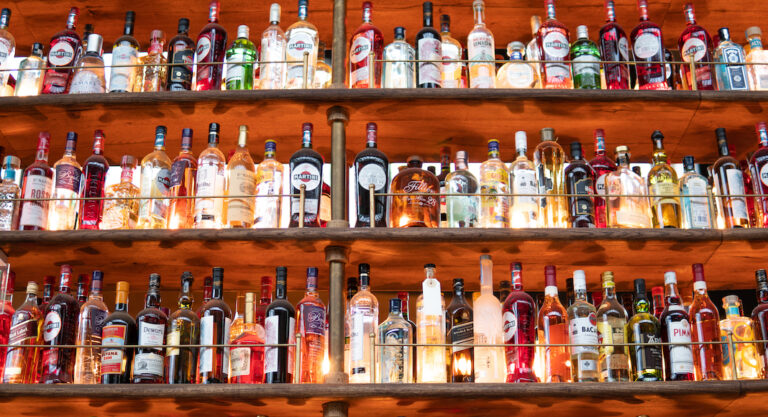This week’s entry, Byrrh, is the fifth in French Morning English Edition’s series tracing the history, ingredients, and uses of French botanical bitters.
Wine and Byrrh!
Byrrh? Surely, you’ve spelled something wrong. Do linguistic clues point to a well-marketed typo for the Anglo-Saxon favorite, “beer”? Au contraire, this oddly monikered mixture relies on grapes, not grains for a base. Considered a fortified wine, Byrrh (pronounced “beer”) combines mistelle – sweet, barely fermented grape juice – and cinchona bark – quinine – to make a ruby red restorative that once caused quite a stir amongst pharmacists of the late 1800s.
Byrrh’s origins are as unexpected as its name. In 1866, two brothers abandoned their métiers as fabric vendors in favor of trying their hand at winemaking. Situated in Thuir, a small village just outside of Perpignan, the boys timed their tinkering just right. A sudden interest in public health coupled with an economic boost from the Industrial Revolution led to a market primed for Byrrh consumption.
Rather than market their product as a wine, the Violet brothers billed their creation as a tonic. Medicinal in nature, it avoided the stigma that recreational alcohol would affix to the elixir. They proceeded to sell the rejuvenating cordial in pharmacies and local grocery stores.
However, false advertising (for fortified wine is still wine!) got this duo in hot water with the National Order of Pharmacists, who claimed – in their typical meticulous manner – that mistelle and quinquina do not a medicine make! Undeterred, the frères simply rebranded their idea, giving birth to France’s first fortified wine aperitif and arguably most mispronounced mixture.
Byrrh hit the market with force. By 1935, it controlled 50% of the aperitif market in France, bringing attention and economic growth to Thuir. In fact, the distillery boasts some impressive ironwork architecture, realized by none other than the famous Gustave Eiffel.
Unfortunately, Byrrh’s popularity declined sharply after World War II due to an influx of stronger, more potent alcohols such as whiskey. After changing distributors multiple times, Pernod finally purchased the rights to Byrrh in 1976 and has produced it ever since, along with another herbal remedy, Suze. While many distillery sites no longer exist, the original location still stands in Thuir and welcomes tourists for guided visits, during which tastings are a must.
Byrrh’s composition relies on the marriage of macerated quinquina (cinchona bark), coffee, bitter orange, cocoa, and sweet grape juice. The combination is matured in oak casks, some of which are incredibly large. In fact, the Byrrh distillery houses the biggest wooden cask ever created: it measures a whopping 10 meters high and 12.46 meters across, holding 10,002 hectoliters of liquid in total.
Available on liquor store shelves since 2012, a bottle of Byrrh retails for about $30.00 – if you can find it. Considered fairly light at about 18% alcohol by volume, it’s an excellent way to whet the appetite or perhaps finish the evening, sipped slowly from a Bordeaux glass.
But what does the wine-like Byrrh taste like? The bright, ruby liquid is often compared to a light port due to its sweetness. It possesses a somewhat earthy aftertaste and decidedly bitter finish, complete with hints of coffee, orange, berries, and cinnamon. The finished product was once thought to increase stamina, stimulate the senses, and restore general health with a pleasant taste to boot.
Given the large range of flavors present in the fruity yet spicy, sweet but bitter brew, it is best consumed by itself, with a curl of scorched orange peel for garnish. However, the citrus notes present lend themselves well to gin-based cocktails or even whiskey-inspired drinks. Curious? Try the Hi Falutin’ cocktail over at Tooker Alley or sip on the Casualty at the famous Amor y Amargo.





